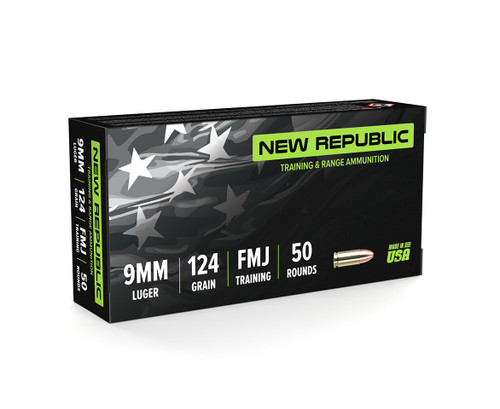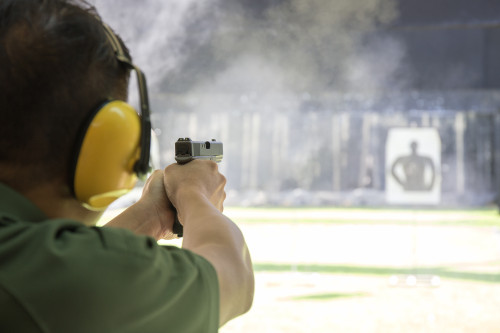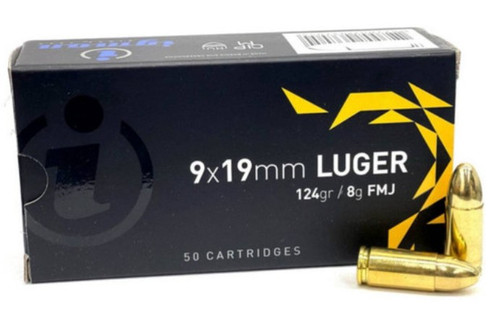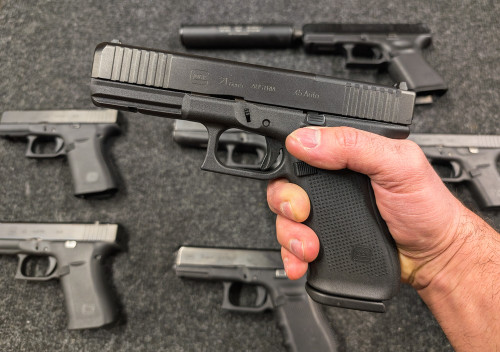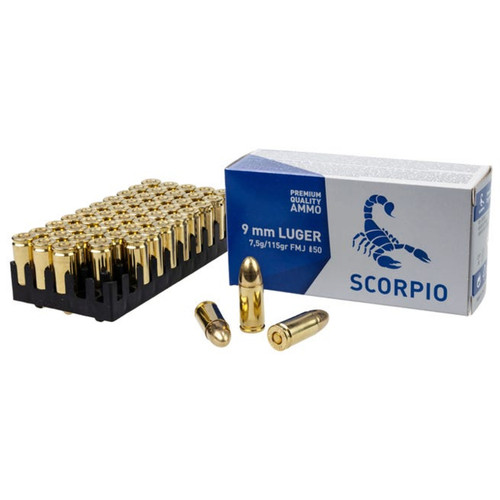Small handguns are nothing new in the world of firearms. Since the days of pocket pistols and derringers, humans have been building small, concealable guns, leading to the vast array of concealed carry guns we have today.
If you’re considering carrying a concealed pistol, you’ve probably considered a smaller gun in your search. However, new gun owners are often confused by the differences between compact and subcompact pistols, and the ways in which they differ from regular handguns. We’ve developed this guide to help clear all that up.
Let’s look at the differences between compact and subcompact pistols, noting their key distinctions, and compare the benefits of each type for concealed carry.
Defining the Terms
First things first: there’s no hard definition for a “compact” or “subcompact” pistol, despite what you may have heard. However, guns in each category tend to share a few traits. Here’s how we interpret each:
Compact Pistol
The compact pistol is a “jack of all trades” gun. Popularized by Glock in the 1980s, a compact pistol has a smaller frame and slide than a full-sized duty pistol, along with a thinner profile. This design makes them easier to conceal. Compare a Glock 17 (full size) to a Glock 19 (compact) to see the difference.
Additionally, compact pistols almost always have double-stack magazines. This requires a wider frame. As a result, they’re a little less concealable than subcompacts.
Subcompact Pistol
After the “wonder 9s” exploded in popularity in the 1980s, manufacturers began to innovate new designs for these pistols. Once again, Glock led the charge with the Glock 26, released in 1995. This design emphasized small frames and slides for maximum concealment. A pistol’s grip length and width is the biggest factor affecting concealment, which is why subcompacts have tiny grips. Compare a Glock 19 to a Glock 43 to see the difference.
Today, companies have refined the subcompact even further. Most modern subcompacts only have a single-stack magazine. This gives them a lower capacity than a compact pistol. However, it facilitates their small size. Grip is also a consideration. The best subcompacts allow you to get both hands on the firearm for better control (like the Sig 365X, Sig365XL, and Sig Macro).
Compact vs Subcompact Pistol: Key Differences
Here are the main differences between these two types of pistols.
- Size: Subcompact pistols are smaller than compact pistols. This makes them easier to carry concealed, but they may feel small for people with larger hands.
- Capacity: Compact pistols often have the same magazine capacity as their full-sized cousins. However, subcompacts usually have a lower magazine capacity, and may only hold 10 rounds per magazine.
- Range: Since compact pistols have longer barrels and sight radii, they’re often easier to use for longer-distance shots (beyond 10-20 yards).
- Caliber: Although 9mm is the most common caliber for both compact and subcompact pistols, subcompacts may also feature even smaller calibers like .380 ACP.
- Recoil: Subcompacts are rumored to kick less than compact guns do. That’s simply not true. The additional mass of a compact pistol actually reduces the effects of the recoil due to increased inertia.
Compact Pistols: Pros, Cons, and Popular Models
| Pros | Cons |
|---|---|
| Useful in many situations. | Not as concealable as subcompact models. |
| Longer sight radius than subcompact pistols, making them easier to aim. | Harder to hold for people with small hands. |
| Higher magazine capacity than subcompact pistols. | |
| Longer effective range — up to 50 yards. |
Love compact pistols? So do we. Here are some of our favorites:
Glock 19
If you’ve ever asked yourself, “Is the Glock 19 a compact or subcompact,” don’t worry — we’ve all been there. The Glock 19 is a fantastic introduction to the compact genre for many gun owners. In fact, it nearly invented the concept of the compact pistol and remains one of its most popular models today.
There’s a reason for that. The Glock 19 is the “do everything” gun. This polymer striker-fired pistol will run hundreds of rounds before it requires a cleaning. It also has a standard 15-round double stack magazine, although it can accept up to 33 rounds with Glock’s extended (“stendo”) magazines. Glock models also don’t have a manual safety, although this is a feature, not a bug. It allows the operator to draw and start shooting quickly, without having to fumble with the safety.
One of the only shortcomings of the Glock 19 is Glock’s standard safe action trigger. This trigger just feels “mushy,” without a particularly crisp break. Fortunately, there’s a solution. If you fancy yourself an amateur gunsmith, you can install Glock’s new performance triggers to improve how the G19 shoots.
Sig Sauer P320c
If you’re familiar with the Sig P320 platform, you’ll know that Sig designed this pistol as a “Glock Killer.” Like the Glock 19, the Sig P320c (the “c” stands for “compact”) is a compact polymer striker-fired pistol. It also comes with standard 15-round magazines, although you can find 17- and 21-round varieties, too.
One benefit of the P320c over its competitors is its modular design. The P320 platform allows a user to remove its fire control group (FCG) and place it into another frame. This means that you can have a single FCG that you swap between multiple frames, essentially giving you one gun that can change sizes. The P320 also has a much crisper trigger pull than the Glock 19, which makes aiming easier.
However, the P320 line isn’t perfect. Currently, several members of national law enforcement agencies have filed a class action lawsuit against Sig, alleging that the P320 series can “go off on its own.” We’ll have to see how the lawsuit plays out to determine whether these allegations have any merit. In the meantime, you can always buy one of Sig’s M18s if you’re worried. These have manual safeties to ensure the gun doesn’t go off by itself.
Beretta 92
The Beretta 92 series is one of the most iconic firearm platforms of all time. The full-sized version, the M9, served as the US military’s main sidearm from 1985 until 2017. Outside of military applications, the compact version, known as the 92 Compact, has become a popular civilian gun in its own right.
Unlike the Glocks and P320s, Beretta’s 92 series features a metal frame design. This makes the pistol heavier, but also helps to dampen felt recoil. It also has a double-action/single-action trigger, in stark contrast to the other striker-fired guns mentioned above. This gives the 92 a much longer trigger pull, but it feels smoother and breaks more crisply than the Glock does.
Finally, all 92 Compact pistols have a manual safety. This is a nice addition for newer shooters who are getting used to carrying a gun for the first time. However, it can definitely interfere when shooting the gun, so make sure you train with it on a regular basis.
Subcompact Pistols: Pros, Cons, and Popular Models
| Pros | Cons |
|---|---|
| Highly concealable. | Shorter sight radius, making it harder to aim than compact models. |
| More comfortable for people with smaller hands. | Lower magazine capacity. |
| Shorter effective range – about 25 yards. |
Do subcompact pistols pique your interest? Here are some of the most popular subcompacts out there.
Sig P365
Think of the 365 as the 320’s younger brother. It has a lot of the same mechanisms as the P320, but comes in a smaller size. It’s also got the same excellent triggers that Sig uses on all of its striker-fired pistols. In terms of firepower, the 365 manages to hold plenty of ammo in a small frame, with a 10-round standard magazine. You can find P365s with manual safeties, too.
Sig P365 XMACRO
The Sig Sauer P365 XMACRO is one of the most popular 9mm compact pistols. It’s a bit larger than the P365 with a higher capacity (17+1). Other than their size, these two 9mm pistols are quite similar. However the increased height and width of the XMACRO affords the shooter a bit more grip space. The length of the XMACRO’s barrel (the same as the P365XL) also allows for extra picatinny rail for accessories. Overall, the XMACRO offers 5 extra rounds for just a 1/4-inch longer grip.
Glock 43x
The 43x is currently the most popular of Glock’s subcompact offerings. It improves on the design of the original Glock 43 by adding a longer grip. This makes the gun easier to fire, and provides for 10 rounds per mag — nearly double that of the original Glock 43.
Like all Glocks, it’s a striker-fired pistol with a polymer frame. If you’re looking for a gun to carry concealed, the 43x should be on your short list. Its super slim profile makes it one of the best concealed carry guns out there. What’s more, its grip is almost as long as a Glock 19’s, giving your hands plenty of real estate. It’s a noticeably snappier shooter though, with more recoil than the 19.
Springfield Hellcat
If you’ve done any research on sub-compact pistols, you’ve no doubt heard of the Springfield Hellcat. This self-dubbed “micro-compact” 9mm pistol comes with 11+ 1 and 13+1 magazine options and comes with a standard loaded chamber indicator. At only 1 inch thick, the Hellcat offers grip that’s just right, enhanced by Springfield’s trademark Adaptive Grip Texture. Yet despite its smaller size, this pistol still has very manageable recoil.
Overall, the Hellcat is one of Springfield Armory’s best contributions to self-defense firearms. Specifically designed to provide comfort in every area for concealed, everyday carry, the Hellcat is a reliable, durable choice for compact 9mm handguns.
Special Considerations in Choosing Between Compact and Subcompact Pistols
As always, it's important to choose a gun based on your specific shooting goals. Everyone is different, and finding the best type of handgun for you requires you to get out on the range and run some live ammo through a variety of firearms. In that, here are a few things to consider when choosing between the two:
- Concealment: If you need ultimate concealment, stick with a subcompact. Their small profile makes them ideal for everyday carry IWB.
- Firepower: Looking for better range or more firepower? Consider a compact, since it usually has a higher magazine capacity and longer sight radius than a subcompact.
- Preference/Hand Size: There’s also the simple matter of personal preference. If you have small hands, you may want a subcompact pistol.
- Accessories: In general, both subcompact and compact pistols accept accessories fairly well. However, subcompact pistols may require specialized optics that are extra small.
- Ammo: Most (not all) compact and subcompact pistols are chambered in 9mm. But if you’re going for ultimate concealment, consider a pistol chambered in .380 ACP. It’s smaller than 9mm, but it makes up for it with higher magazine capacities.
- Maintenance: You also need to keep your gun in good working order. While you can shoot a Glock without cleaning it for a thousand rounds without a misfire, it’s not the best idea. That said, “good working order” can mean different things to different people. Will this gun be your EDC pistol or home defense weapon? If so, you’re going to want to clean it regularly. When your life’s on the line, you don’t want your gun jamming from carbon buildup. In contrast, if this is just a range toy, you only need to clean it every 500 to 1,000 rounds.
Final Verdict: Is Subcompact Better Than Compact?
When doing research online, you’ll see plenty of people debating the merits of compact and subcompact pistols. So which is better: a subcompact better or a compact pistol?
Short answer: neither. A subcompact pistol is not necessarily better than a compact pistol, nor the other way around. Subcompacts may be better at doing certain things (like staying hidden). However, they may not be the ideal nightstand gun given their often lower magazine capacity.
Ultimately, the best pistol is the one that will do what you need it to do and feels good in your hands when you’re shooting it. Regardless of which pistol you end up choosing, you’ll need to train with it to be effective. At Pro Armory, we can help.
As a veteran-owned business, we have the expertise to help you master your weapons, protect your family, and stay safe with your firearm. We offer basic and advanced firearms courses for both the new gun owner and the tactically inclined. Sign up for our newsletter to be notified when training officially launches.
To train on the range, you’ll also need live ammo you can actually afford to use regularly. Check out our selection of handgun ammo to make sure your compact and subcompact pistols are always well-fed.






